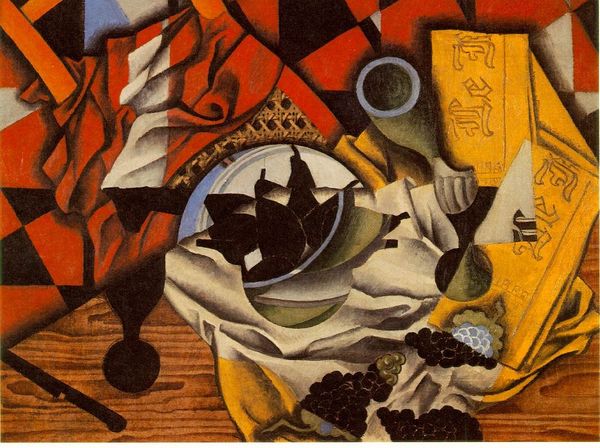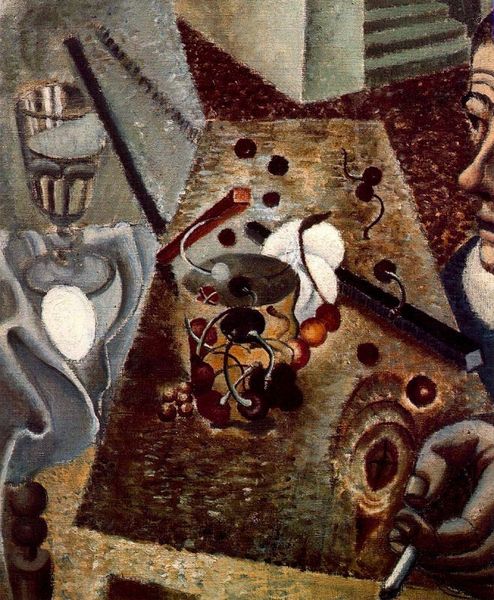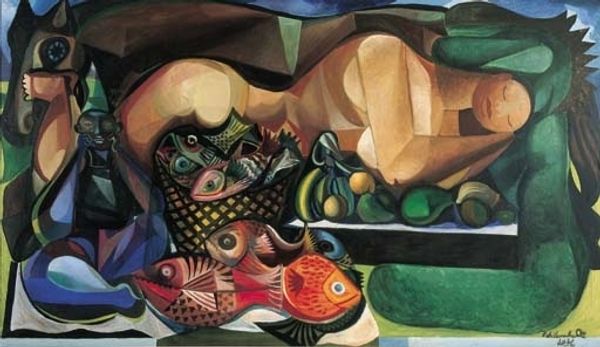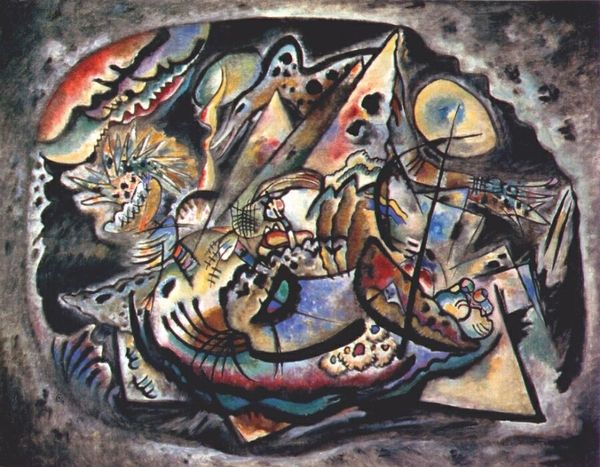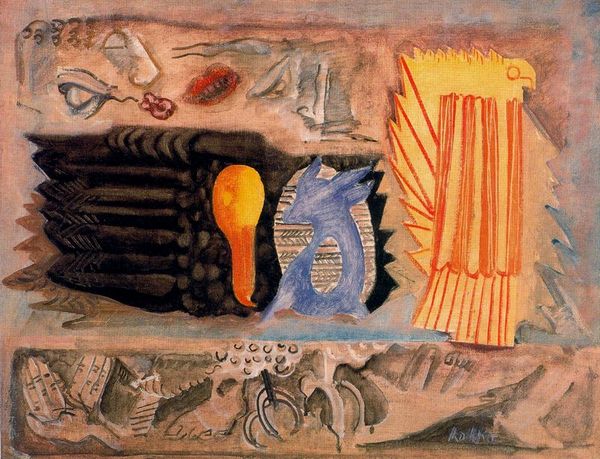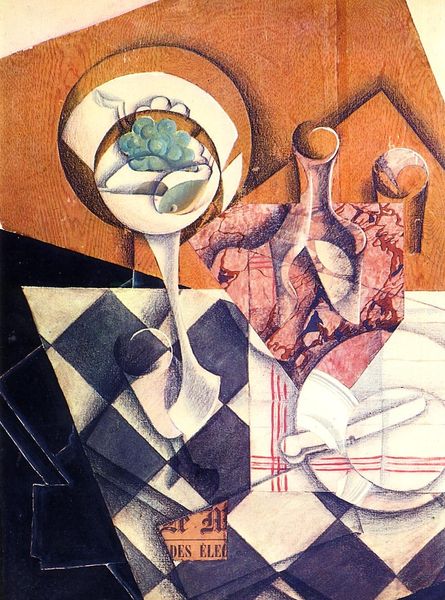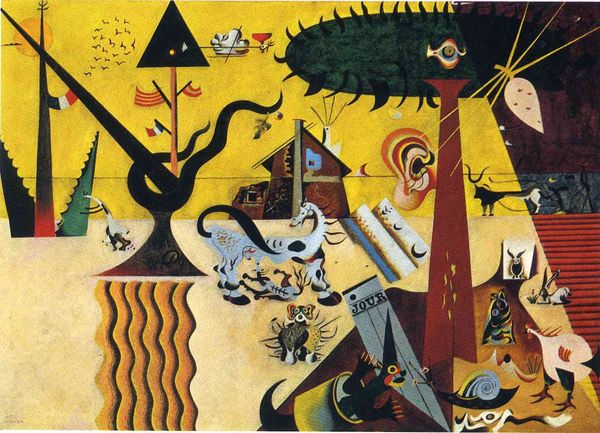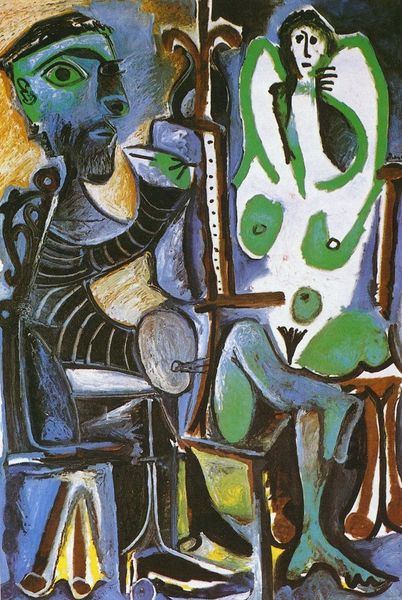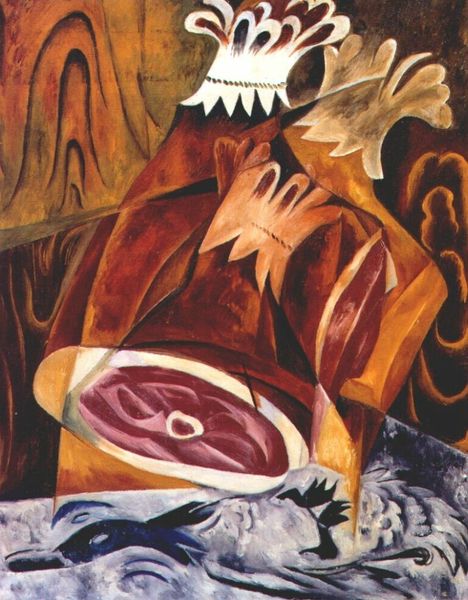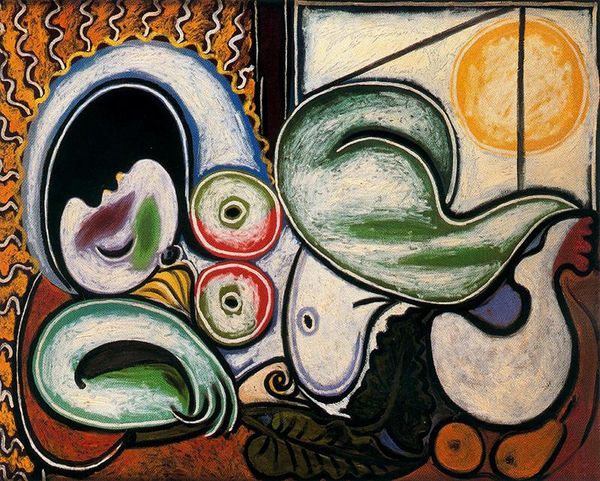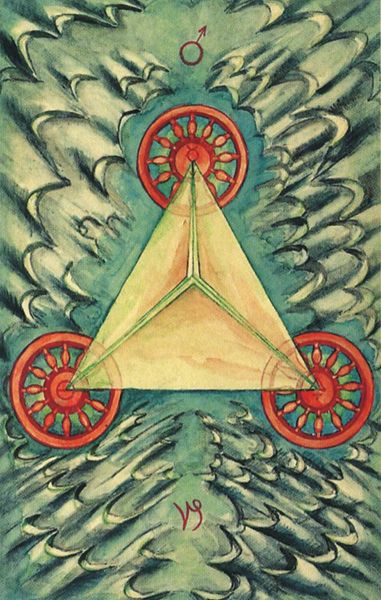
painting
#
cubism
#
food
#
animal
#
painting
#
furniture
#
landscape
#
geometric
Dimensions: 130 x 110 cm
Copyright: Public domain US
Joan Miró painted ‘The Table’ sometime in the 20th century using oil on canvas. The painting embodies the cultural and political tensions of the time, as Miró was living in Paris during the rise of fascism in Europe. Although the painting may seem like a traditional still life at first glance, ‘The Table’ diverges from this genre in its use of distorted perspective. The flattening of forms and the disruption of spatial relationships could represent the fragmentation and uncertainty of modern experience. The objects depicted are not presented realistically, but rather as symbols. Miró once said that he aimed to "break free from the conventions of bourgeois society." This sentiment can be felt in the painting's rejection of traditional artistic norms and its exploration of new modes of expression. The inclusion of animals typically used for food and/or hunting could be interpreted as a commentary on the ways in which humans interact with the natural world. "The Table" invites us to contemplate the complexities of identity, history, and representation. It reflects broader questions about how we construct meaning and make sense of our place in the world.
Comments
No comments
Be the first to comment and join the conversation on the ultimate creative platform.
